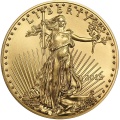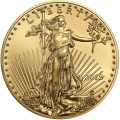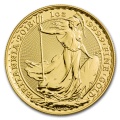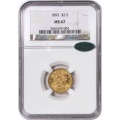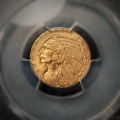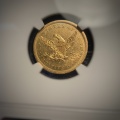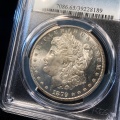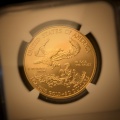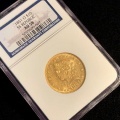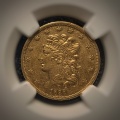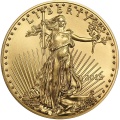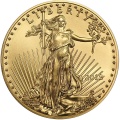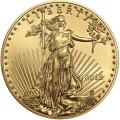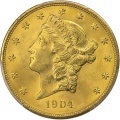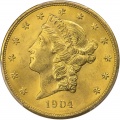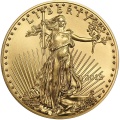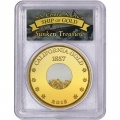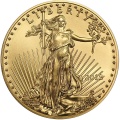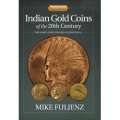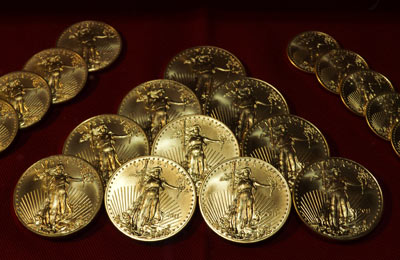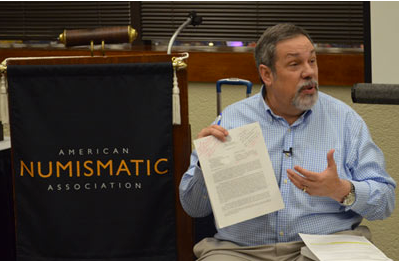July 2025 - Week 2 Edition
Several States Are Creating a Revived Gold Standard
Texas joined the new gold and silver currency bandwagon with several other states after Governor Greg Abbott signed a bill on June 29 creating what may be the most comprehensive precious metals financial transaction platform in the nation. This legislation allows Texans to use precious metals stored in the state-run Texas Bullion Depository for their normal daily purchases using debit cards and mobile applications. Abbott said, “I signed a law authorizing Texans to use gold & silver as legal tender in day-to-day financial transactions … It fulfills the promise of Article 1, Section 10 of the U.S. Constitution.”
The Texas law isn’t immediately active. It will take effect in phases starting September 2026, so the Texas Comptroller can establish electronic systems to convert gold and silver into U.S dollars at the point of sale. Supporters of the legislation argued it would protect Texans against inflation while returning to clearly Constitutional monetary standards. Over 76% of Texans “voted for this type of transaction,” Abbott said. Texas’s full transactional gold alternative currency system is scheduled to be operational by May 1, 2027.
For those who say using gold is impractical in stores, a pioneer of these systems answered that he just paid Delta Airlines for a flight with “seven grams of gold. They had no idea that I was paying with gold.” (A gram of gold is currently worth a little over $100). Later, paid for dinner for a large group with two gold grams using a credit card, saying, “They have no idea that I’m paying with gold.”
It’s important to note that merchants face no additional costs or system changes, as this technology operates through existing MasterCard networks.
The Texas bill is customer-friendly in that it allows an appreciating asset – gold – to be the core asset of a bank account, thereby freeing customers to buy more, over time, at lower prices, in terms of gold grams. In this way, it helps depositors to forget about inflation, which is now nearly 700% since President Nixon took gold backing off the dollar in 1971, as gold has increased 13-fold since 2001.
The Media Mocks These Gold Accounts - Ignoring History, the Constitution and Common Sense
I’m not sure what motivates writers in the media but they often seem to get out of their lane and share their poorly researched opinions with their readers. Upon reading about these new gold accounts, a Houston Chronicle opinion writer noted: “A new Texas law is about to make paying with gold or silver as easy as swiping a credit card. Sure, this wasn’t exactly topping the ‘urgent Texas problems’ list – we’d argue potholes and power grids are a bit higher – but here we are. While most of us feel safer sticking with dollars (and not undermining the currency of the United States), according to state Rep. Mark Dorazio (R-San Antonio), it’s what God wants. ‘If you go back to the scripture in Genesis 2, it gives you a reason how God intended us to be able to effectively engage in commerce,’ Dorazio told the Houston Chronicle. ‘And that reason was: ‘In the land of Havilah, I place the gold.’”
Wow, how do you fit so much poorly researched material into one paragraph? Most Texans want and need protection from inflation and these gold accounts have nothing to do with stopping the state from filling potholes or fixing power grids. It’s also not a Bible verse alone but a Constitutional verse.
In Article I, Section 10, the U.S. Constitution limits states’ ability to issue legal tender, stating they cannot make “any Thing but gold and silver Coin a Tender in Payment of Debts.” That’s pretty clear and the Founding Fathers even capitalized various words for emphasis.
Reporters who don’t read much history can’t be expected to know that the dollar just turned 240 years old this week but with a little research, they would. On July 6, 1784, the Constitutional Congress authorized the first issuance of the dollar. For over 70 years, the dollar was minted, not printed, by the Bureau of Engraving and Printing. A Silver Dollar or Gold Eagle contained a fixed amount of silver or gold but in 1933, President Roosevelt stopped minting gold coins and demanded Americans surrender most of their gold for cash payment. Peace silver dollars stopped minting in 1935, although some circulating silver coins were still minted through 1969 and there was virtually no peacetime inflation from 1790 to 1940.
The Consumer Price Index (CPI) stood at 12.6 in April and May 1933, when FDR demanded Americans surrender their gold. In May 2025, the latest CPI release shows the CPI at 321.465, which represents about a 25-fold price gain (+2,450%) in the last 92 years. What cost us a dime in 1933 costs over $2.50 now.
The Founding Fathers insisted on Gold and Silver coinage in the Constitution and in the 1792 Coinage Act, because our first President, George Washington, and his wartime aide-de-camp and first Treasury Secretary, Alexander Hamilton, remembered well how paper money depreciated to near-zero value during their Revolutionary War years. Four years into that war, in 1779, General Washington said, “A wagonload of currency will hardly purchase a wagonload of provisions,” while the British Pound, backed by gold and silver, kept its value.
In today’s news, pundits weigh the dollar in terms of the euro or other paper, not to gold, but even in those terms, the dollar is down 15% to the euro in the first half of 2025. At the start of the year, we quoted an analysis by Bank of America stating the dollar could fall 20% in 2025 and we’re over halfway there. The U.S. dollar index is down 12% from 110 to 97, and the euro is up from $1.02 to $1.18 (+15%).
When my staff and I met with Steve Forbes to collaborate about gold prices in October 2023 – gold was under $2,000 per ounce – we predicted a gold price of $2,500 in 2024 and gold hit $2,700 but $2,500 gold sounded impossibly high at the time. We believed gold would rise due to debt and inflation eroding the dollar.
The dollar will vacillate against the euro and other paper currencies and maybe hold its own to paper, in the long term but the dollar is down 92% since 2001 in terms of gold. All reporters should do a little research and mention that fact for proper context!
That’s what these new state laws hope to remedy with gold-denominated, inflation-protected banking.

Gold is up over 1% in the first week of July after rising 25% in the first half of the year. Silver is up 2.4% in the same six trading days of this month, while the Dow and S&P are up less than 1%. Gold and silver are up 26% year-to-date vs. one-fourth that gain (6.5%) in the S&P 500 and over 5-1 vs. the Dow index.
Important Disclosure Notification: All statements, opinions, pricing, and ideas herein are believed to be reliable, truthful and accurate to the best of the Publisher's knowledge at this time. They are not guaranteed in any way by anybody and are subject to change over time. The Publisher disclaims and is not liable for any claims or losses which may be incurred by third parties while relying on information published herein. Individuals should not look at this publication as giving finance or investment advice or information for their individual suitability. All readers are advised to independently verify all representations made herein or by its representatives for your individual suitability before making your investment or collecting decisions. Arbitration: This company strives to handle customer complaint issues directly with customer in an expeditious manner. In the event an amicable resolution cannot be reached, you agree to accept binding arbitration. Any dispute, controversy, claim or disagreement arising out of or relating to transactions between you and this company shall be resolved by binding arbitration pursuant to the Federal Arbitration Act and conducted in Beaumont, Jefferson County, Texas. It is understood that the parties waive any right to a jury trial. Judgment upon the award rendered by the Arbitrator may be entered in any court having jurisdiction thereof. Reproduction or quotation of this newsletter is prohibited without written permission of the Publisher.


